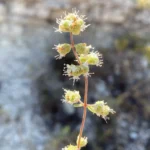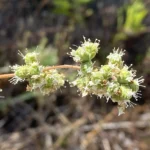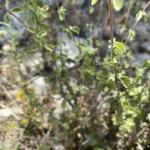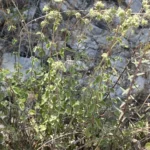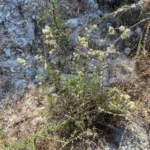Ορίγανον η μαντζουράνα, Σαψυσσιά
Etymology of Origanum majorana
The binomial name Origanum majorana has its roots in ancient languages and traditions. The genus name, Origanum, is derived from the ancient Greek words "oros" (ὄρος), meaning "mountain," and "ganos" (γάνος), meaning "joy" or "brightness." This gives rise to the poetic translation "joy of the mountain" or "brightness of the mountain," likely referring to the herb's tendency to grow on hillsides and its pleasing aroma and appearance.
The species name majorana in Origanum majorana originates from medieval Latin, likely derived from the Arabic word “marzanjūsh” used in traditional medicine across the Mediterranean and Middle East. This name entered European botanical vocabulary through the transmission of Arabic medical knowledge during the Middle Ages. Carl Linnaeus formally classified the plant as Origanum majorana in the 18th century, adopting the species name already established in herbal literature. Contrary to some assumptions, majorana is not related to the Latin word for “greater” but is a Latinized form of an older Semitic or Arabic name reflecting the plant’s long-standing use in culinary and medicinal traditions.
About Origanum majorana
Origanum majorana, commonly known as marjoram, is a beloved and versatile herb with a rich history and a wide array of uses. Belonging to the Lamiaceae family (mint family), it is closely related to oregano but possesses a distinct, milder, and sweeter flavor profile.
General Characteristics and Growth
Marjoram is typically a bushy sub-shrub, growing to about 30-60 cm (1-2 feet) tall. The plant features reddish, square stems densely covered with small, ovate, highly aromatic, fuzzy, grayish-green leaves. Its tiny, two-lipped, tubular flowers, ranging from white to pale pink, appear in small, spike-like clusters in mid to late summer, though they are not particularly showy. Marjoram thrives in full sun and well-drained, gritty, sandy loams, preferring neutral to alkaline soils. It exhibits good heat and drought tolerance.
Origanum majorana in Cyprus
Origanum majorana is a rare plant to encounter in the Cypriot nature. It grows primarily in western Cyprus between altitudes of 0-925 meters. Its flowering period is between May and October.
Related Species and Distinctions
Origanum majorana is often compared to its close relative, Origanum vulgare, commonly known as oregano or wild marjoram. While they share the same genus, marjoram generally has a milder, sweeter, and more delicate flavor than the more pungent and robust oregano. This distinction is crucial in culinary applications, as they can sometimes be confused. Other cultivated species within the Origanum genus, such as pot marjoram (Origanum onites), also share similarities and uses.

